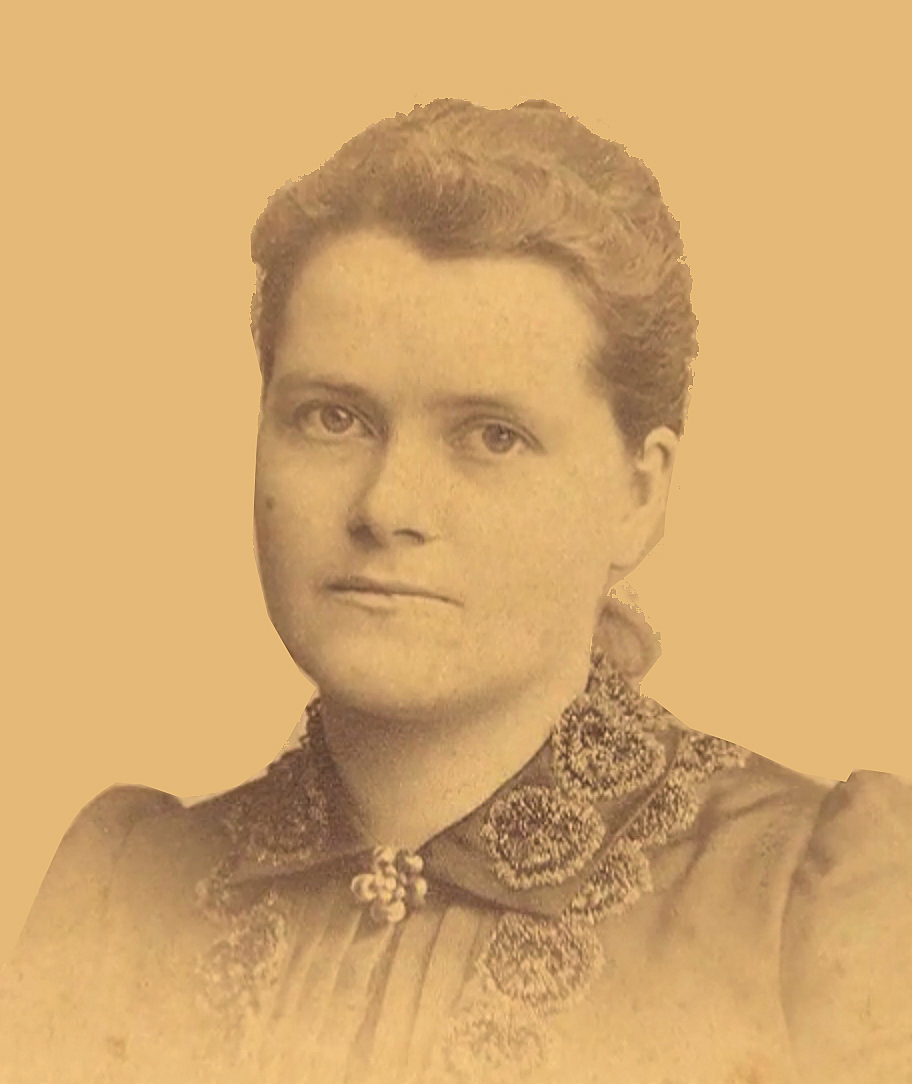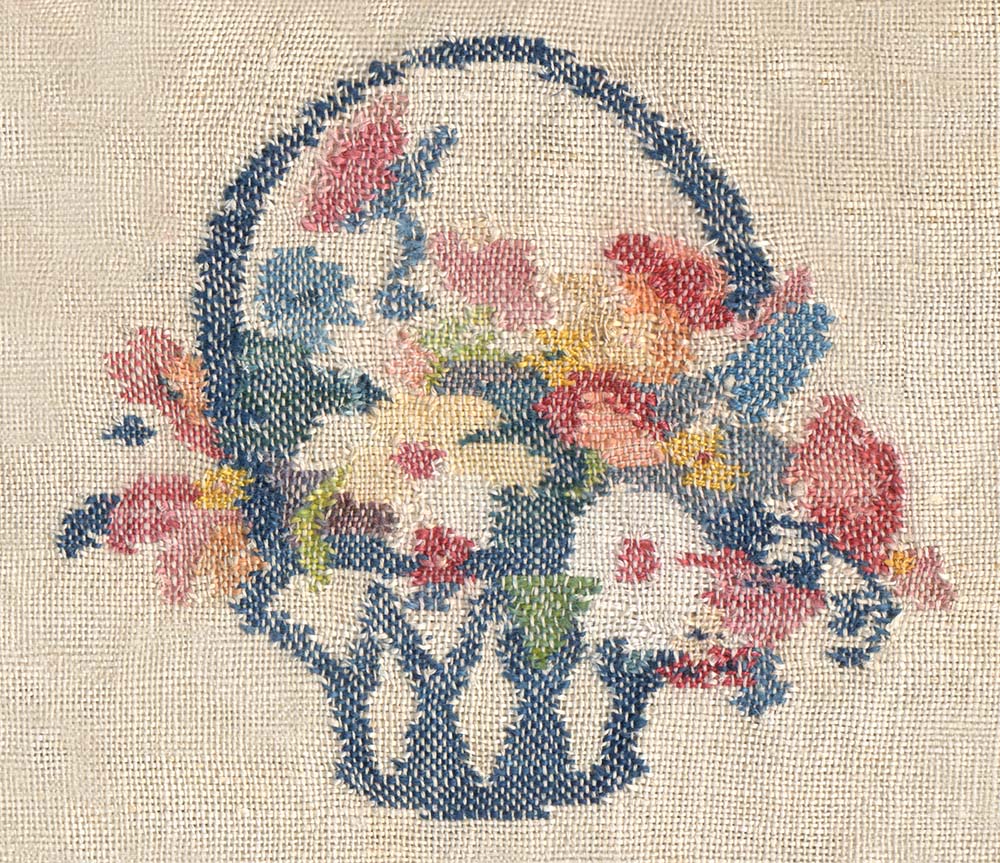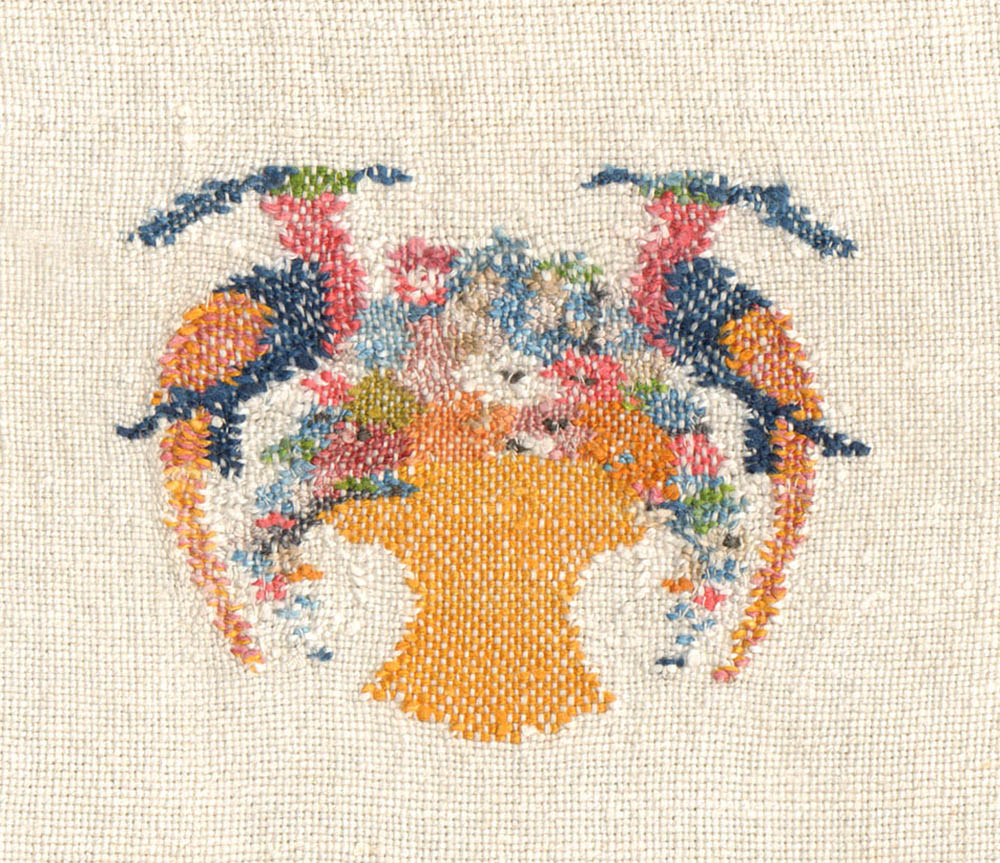Newsletter
The Two Red Roses Foundation is most fortunate to have received a significant donation of turn-of-the-century textiles produced by Elizabeth Fisk.
Her amazing story, and how her curiosity, craftsmanship, and entrepreneurial leadership helped create a thriving cottage industry built around the art of handmade textiles begins with Martha (Marty) Dale, Mrs. Fisk’s great niece and the Fisk family historian. Her dogged determination to keep Fisk’s legacy alive through acquisitions, painstaking research, exhibitions, articles, and the production of a video, spans decades. In his book Handicrafts of New England (1949), Allen Eaton proclaims that “Among pioneers in the revival of hand weaving and the development of textiles in the United States, the Elizabeth Fisk Weavers of Isle La Motte and St. Albans hold a high place.”
Elizabeth Hubbell was born August 31, 1859 in Chazy, New York, the second of eleven children. In 1880, at the age of 21, she married Nelson Fisk, the son of Vermont’s Isle La Motte’s quarry owner and influential Vermont politician. It was on the Isle La Motte where her passion for weaving and textiles began. Mr. and Mrs. Fisk had no children, and spent their summers in Vermont and winters in New York City where Mrs. Fisk took classes in dye chemistry at the Pratt Institute and studied art with the painter William Merritt Chase.
When Elizabeth discovered a colonial era loom in the attic of her house on Isle La Motte, she was fascinated and began weaving rag rugs. Apparently self-taught, she soon graduated to domestic household textiles such as bedspreads, table runners, table squares, napkins, sideboard scarves, portiere, pillow cases, placemats, and curtains. She encouraged neighbors to resurrect their own long-forgotten looms and participate in creating textiles that could be sold. Elizabeth Fisk Looms was created and the nearby community of St. Albans and its women weavers soon joined in the enterprise.
Elizabeth Fisk Looms embodied the ideals and spirit of reform of the Arts and Crafts movement. These textiles were handmade by a small community of local women on antique looms with naturally dyed linen in a stone cottage in an idyllic rural setting. This craft production was as much a way of life as a way of making a living while rebelling against the mass production of household products.
Elizabeth Fisk Looms linens and textiles were practical and functional items for the home. The designs were symmetrical and centrally balanced while featuring natural motifs like flowers, plants, and animals. In the 1923 issue of Ladies Home Journal, Mrs. Anna Bailey Smith, Fisk’s business partner and close friend, describes the role flowers played in Mrs. Fisk’s designs: “the beds of hollyhocks, five feet high, on which Mrs. Fisk looks down while working, have proven the color inspiration for many of the weaver’s loveliest pieces”. All the linens pictured below are part of the collection which was donated by Martha T. Dale and the Family of Elizabeth Fisk.
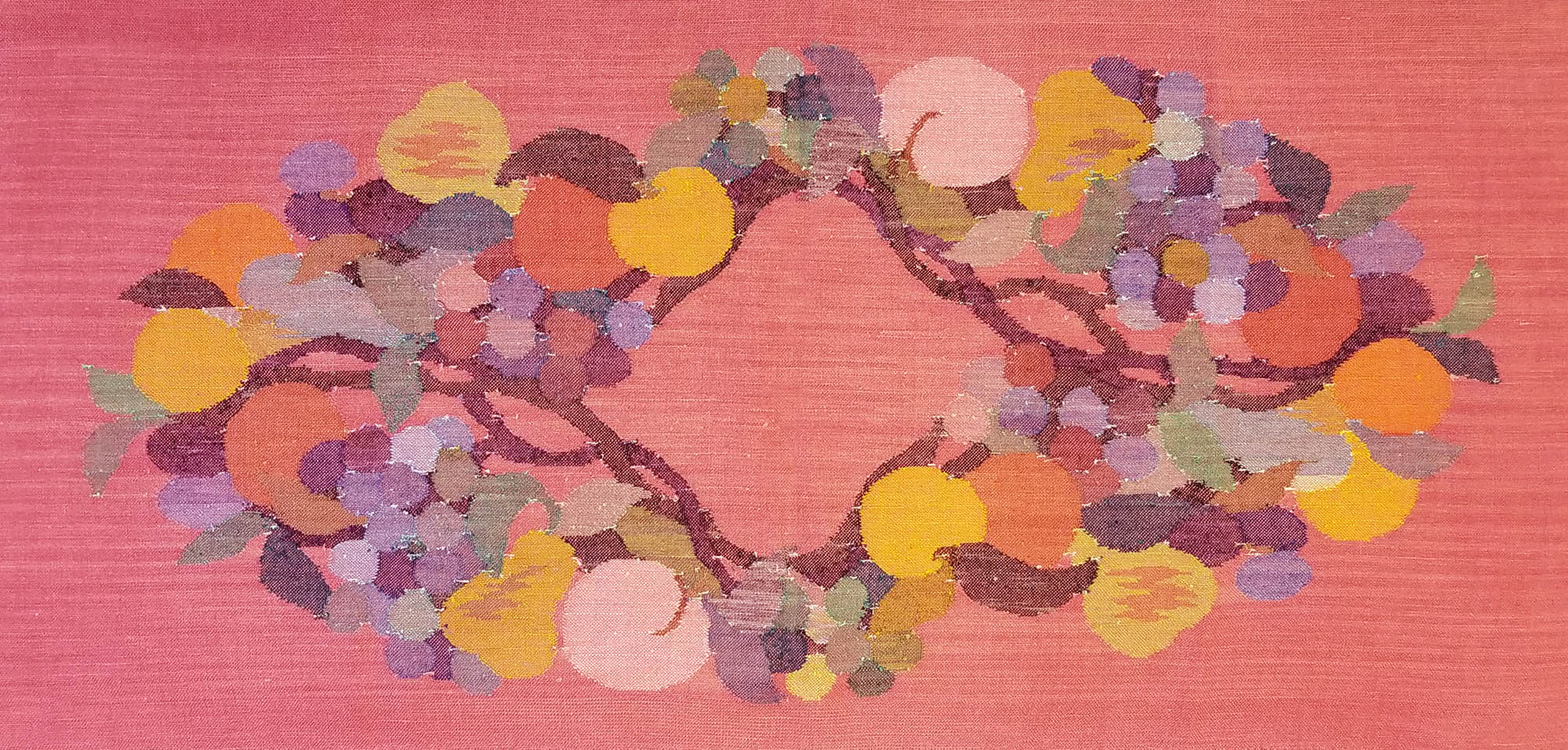
The Fruit Wreath Table Runner, shows Fisk’s aptitude for dying threads brilliant colors to execute vibrant designs. This motif symbolizes abundance and hospitality with a wreath of grapes, apples, peaches, oranges, pears, and a lemon connected by vines to form a diamond shape void in the middle, perfect for a center piece or serving dish. 18 ¾ x 38 ”.

The Buffalo Table Runner, a monochromatic sideboard scarf, features sets of buffalos facing each other and is a more subtle design meant to complement a library table or a sideboard. The tilted heads and forward leaning legs suggest the buffalo are challenging each other and ready to charge. The energy of these massive beasts is enhanced by the sloping ground on which they stand. 16 x 39 ¾ ”.
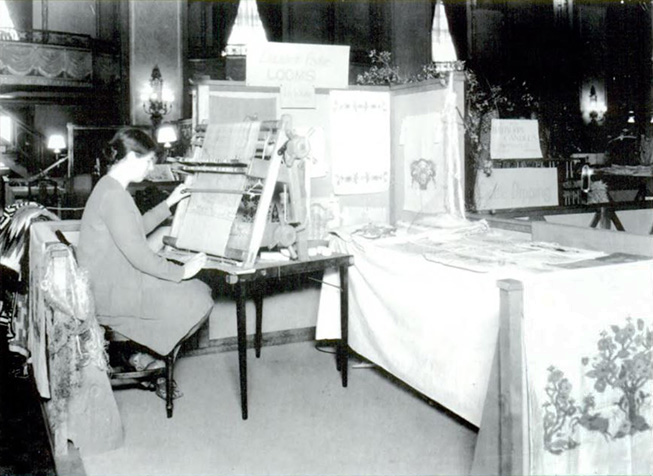
Mabel C. Holcomb photographed during the Craftsmen at Work Exhibition, which took place from October 28 through November 8, 1930, in the ballroom of the Hotel Styler in Boston. Displayed is a finished historical textile from Fisk Looms now in the collection of the Two Red Roses Foundation. (Courtesy of the Isle La Motte Historical Society.)
The allure and uniqueness of handcrafted linens for the home was appealing to a wide audience and word of Fisk Looms spread, increasing their demand. Among her customers was the wife of the Director of the Metropolitan Museum of Art as well as the General Federation of Women’s Clubs, for whom she created a woven tapestry of their coat of arms. Elizabeth Fisk Looms exhibited at numerous craftsmen exhibitions and conventions, demonstrating their techniques and showing their work, and won awards from the Chicago Art Institute and the Federation of Women’s Clubs.
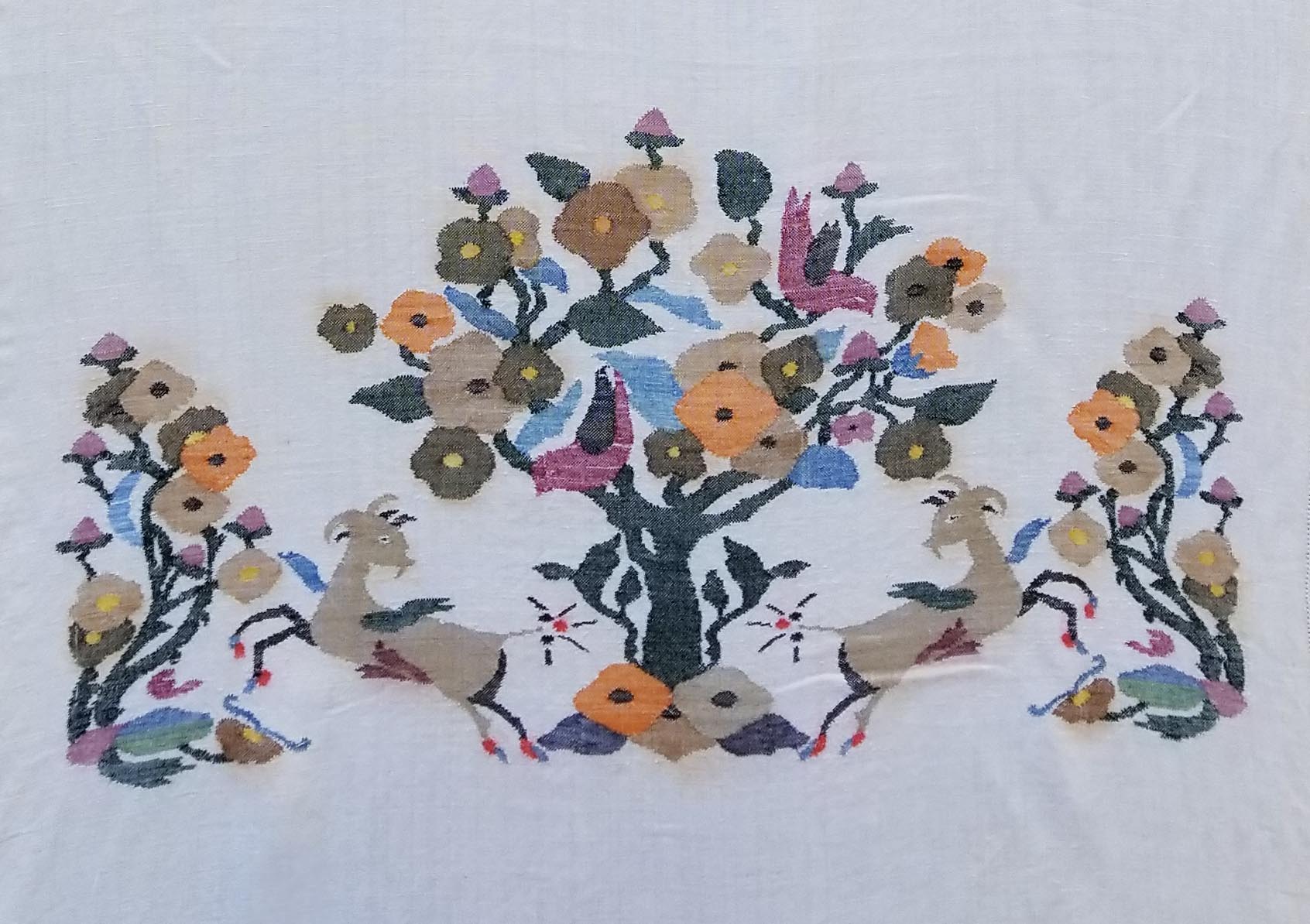
Detail of the tablecloth in the Mabel C. Holcomb vintage photograph above which is now in the TRRF collection. 70 x 34 ”
Upon her death in 1927, Mrs. Fisk left the looms to her workers who formed a guild and continued her work. While Fisk introduced innovative techniques for weaving on the loom and crafted beautiful textiles, her legacy in the Arts and Crafts movement is her training of women and starting a guild-like industry of weavers in Vermont. Not only did this prove advantageous to the region, whose only other industry was quarrying, but it was particularly beneficial to women in the area who sought employment. Even after Fisk’s death, Elizabeth Fisk Looms still operated, affirming a legacy of training and business acumen that lasted until the 1930s, continuing to provide economic opportunities for women and unique handcrafted household linens in the early twentieth century.
In many ways, artistic linens and textiles remain under researched and rarely written about by authors and scholars, as they seem to have likely fallen into disrepair and have been discarded as many functional household items do. The Two Red Roses Foundation is excited to have this important collection as part of its holdings and to further the legacy of Mrs. Elizabeth Fisk.
This collection of textiles will be displayed along with other notable textiles from Gustav Stickley, Newcomb College, M.H. Birge & Sons, George M. Niedecken, Frances M. Macnair, and others at the American Craftsman Museum upcoming Museum of the American Arts and Crafts Movement, opening in Fall of 2019 in St. Petersburg, Florida.
